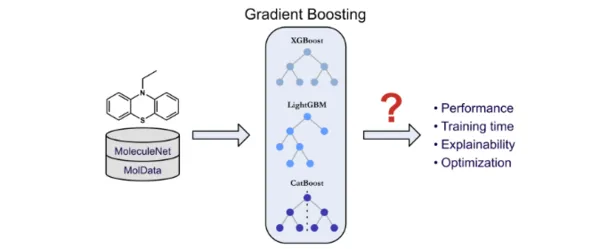New Publication in the Journal of Cheminformatics

Decision tree ensembles are among the most robust, high-performing and computationally efficient machine learning approaches for quantitative structure–activity relationship (QSAR) modeling. Among them, gradient boosting has recently garnered particular attention, for its performance in data science competitions, virtual screening campaigns, and bioactivity prediction. However, different variants of gradient boosting exist, the most popular being XGBoost, LightGBM and CatBoost. Our study provides the first comprehensive comparison of these approaches for QSAR. To this end, we trained 157,590 gradient boosting models, which were evaluated on 16 datasets and 94 endpoints, comprising 1.4 million compounds in total. Our results show that XGBoost generally achieves the best predictive performance, while LightGBM requires the least training time, especially for larger datasets. In terms of feature importance, the models surprisingly rank molecular features differently, reflecting differences in regularization techniques and decision tree structures. Thus, expert knowledge must always be employed when evaluating data-driven explanations of bioactivity. Furthermore, our results show that the relevance of each hyperparameter varies greatly across datasets and that it is crucial to optimize as many hyperparameters as possible to maximize the predictive performance. In conclusion, our study provides the first set of guidelines for cheminformatics practitioners to effectively train, optimize and evaluate gradient boosting models for virtual screening and QSAR applications.
Boldini, D., Grisoni, F., Kuhn, D., Friedrich, L., Sieber, S. A. "Practical guidelines for the use of gradient
boosting for molecular property prediction", Journal of Cheminformatics
Link: https://jcheminf.biomedcentral.com/articles/10.1186/s13321-023-00743-7
Copyright: BMC